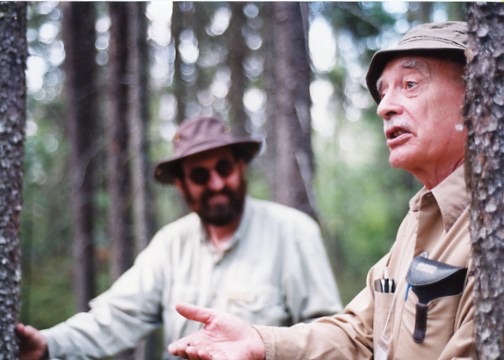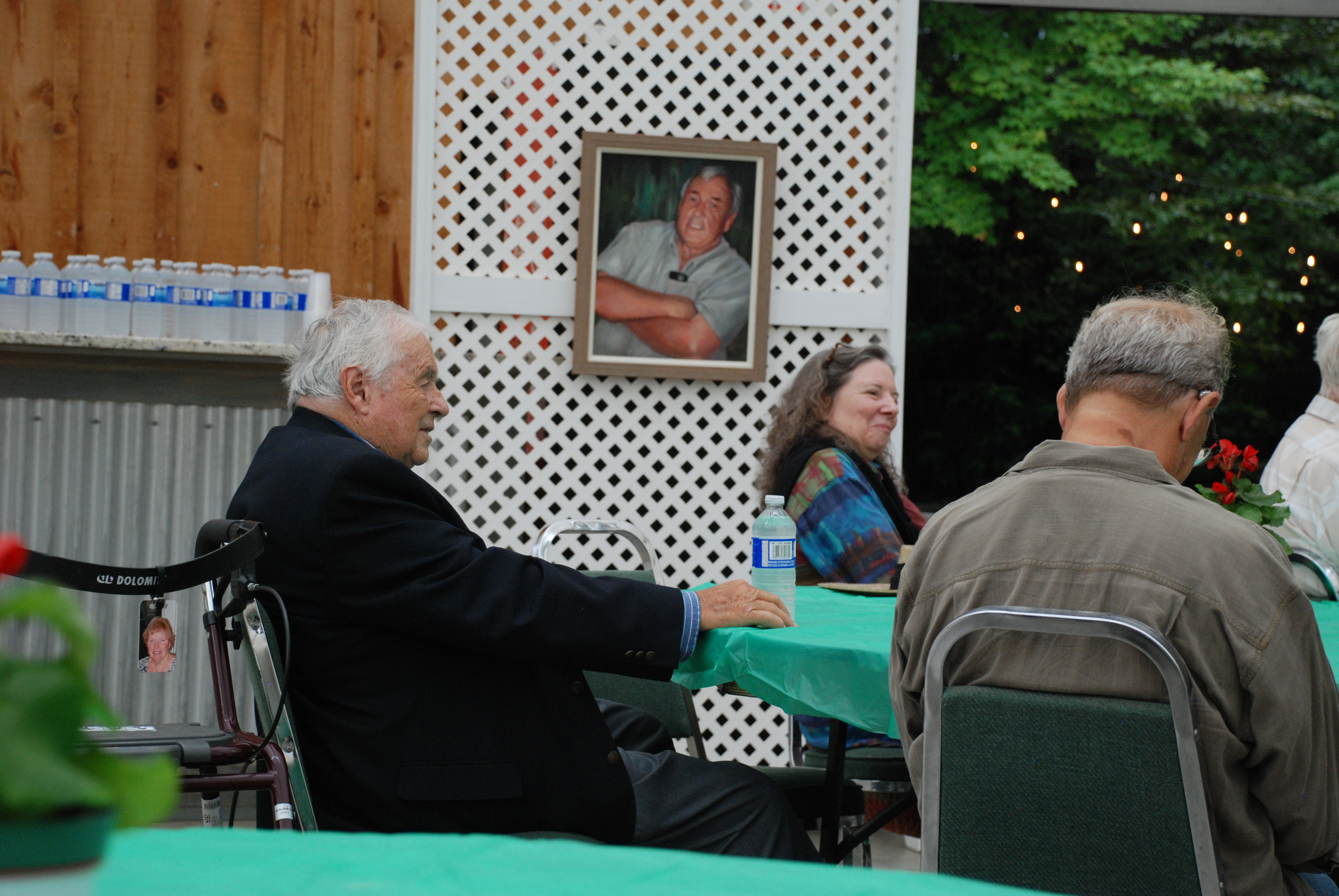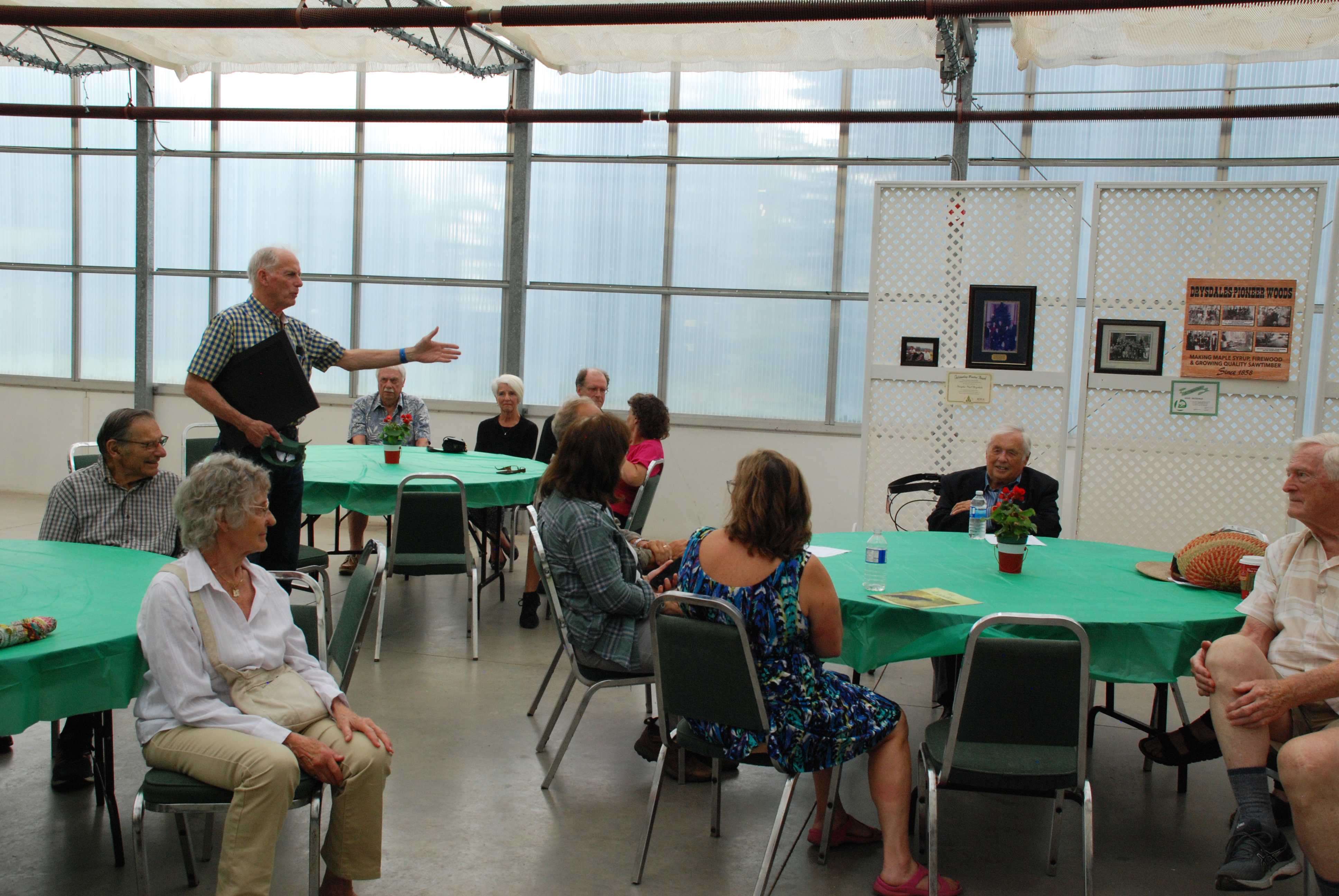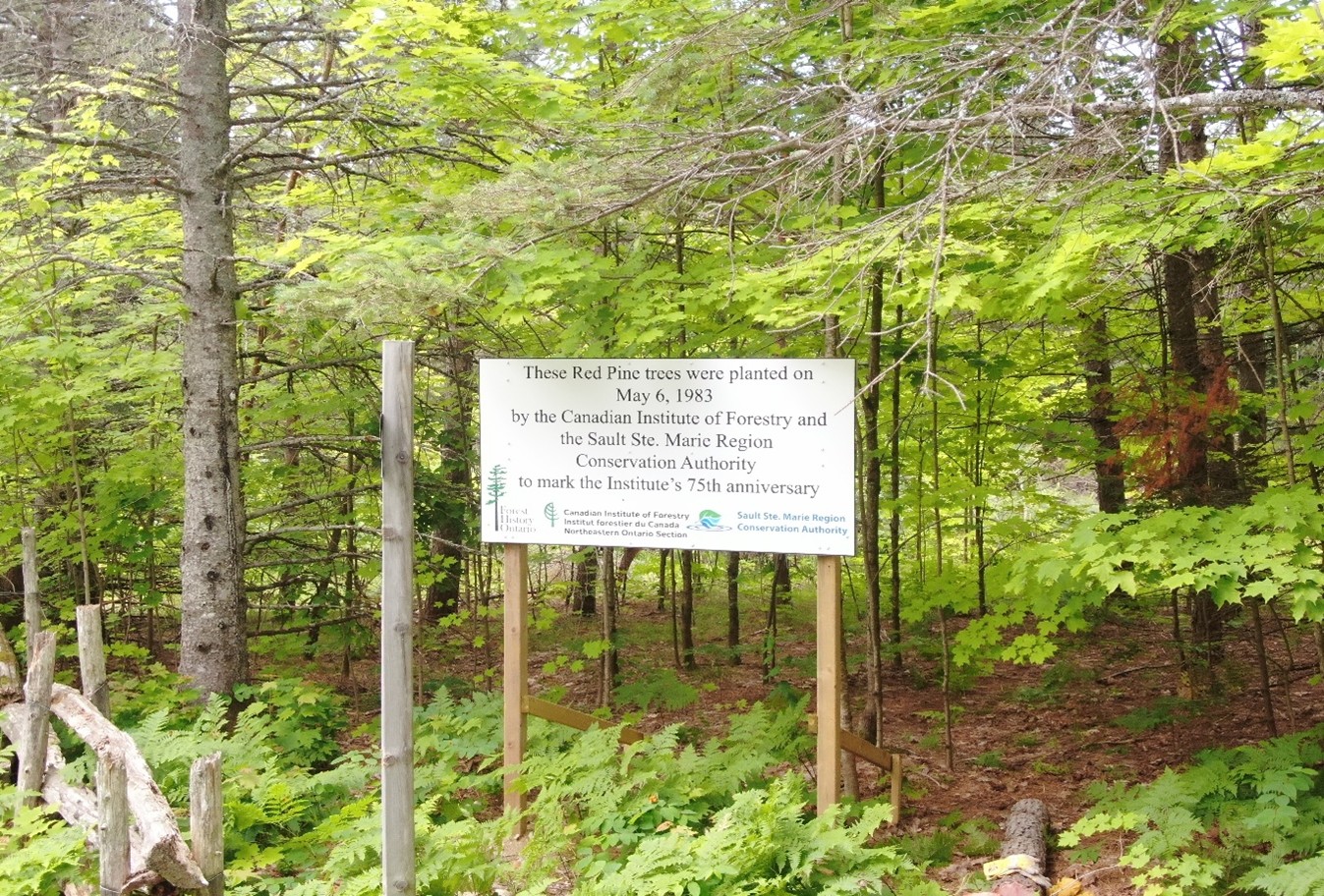Discover a remarkable piece of Ontario’s forest history—one that sat untouched in an attic for nearly a century. Published in The Ontario Woodlander, this article by Art Robertson uncovers a long-forgotten scaling journal that documents the sheer scale and grit of logging operations along the North Shore in the late 1800s and early 1900s.
Explore the full story by clicking here: Art.pdf
From 1995 to1999 the KEY Foundation funded classroom teachers and administrators from across Canada as they attended a forest-management-information packed week in Thunder Bay hosted by Abitibi-Price and Avenor. Each of the five years the two companies hosted 24 to 30 teachers and administrators to a full seven-day in-depth look at Ontario industrial forest management. Included were four days of lectures and three days of tours including one to a Buchanan Brothers sawmill and the Avenor pulp and paper mill and a day in the bush with Avenor and another day with Abitibi-Price.
KEY, standing for Knowledge of the Environment for Youth, was a Canadian not-for-profit foundation that was financed by a group of seven different-industry associations, two other foundations, governments through Human Resources Development Canada and the Saskatchewan Green Plan plus twenty-five individual Canadian corporations including Abitibi-Price and Avenor.
KEY focused on, “Developing teacher training and classroom materials about current topics which relate to science, environmental science and social studies”. The objective that most helped KEY’s credibility with the teachers was summed up by Bob Killam, Executive Director of KEY as, “Our guiding focus at KEY is to develop balance, through speakers from many perspectives, when addressing a topic”.
Speakers at the Thunder Bay seminars were from forest industry companies, environmental activists, forestry consultants, 1st Nations, unions, Ministry of Natural Resources, Monsanto, Lakehead University, research scientists, and community groups.
Throughout the week the focus was on describing and viewing forest management as it was being practiced and responding to questions. After each year’s seminar based on teacher critiques the program for the next year was adjusted to better meet their needs. At the end of each tour teachers rated leaders on whether the tour was worthwhile, offered new information to them, it’s objectives were clear and met, would the information be helpful in their classroom, and would they recommend the presentation to other KEYsters?
Responses from teachers indicated KEY’s objective was met and their education needs were met. Most delegates followed through with personal contact via letters or phone calls after they returned home. The author of this paper remembers that after each seminar his letters sometimes filled three pages and often replied to questions that the sender didn’t feel comfortable asking where answers might be embarrassing or confidential. They received open and factual replies.
Today I look back at my involvement with Ken Armson and Neils Carl as we helped organize and participate in the KEY seminars, especially the field trips. The field trips were a highlight in my enjoyable career as a forest researcher, manager and communicator. The following quotes from delegates in their evaluations were common among those of Neils, who led Avenor’s tours, and of Ken and me who led Abitibi-Price’s tours, “I felt Mac answered all the questions that were raised. I felt he did so honestly and with integrity”, and “All (questions) handled extremely well by Mac and others (eg Ken Armson+ Avenor’s forester!)”.
Earlier this year, we lost an innovative and highly respected forester who was well known and respected in forestry, business and professional circles across the province. Doug was a founding supporter of Forest History Ontario (then the Forest History Society of Ontario) and engaged in a number of FHO activities. On a FHO field tour a few years ago he demonstrated his remarkable recall of projects and activities he was involved in decades earlier by regaling the tour with anecdotes and details of work done in the 1950s.
Doug was a caring family man, loyal and generous friend, and accomplished forester, farmer, entrepreneur and philanthropist, Doug left behind a legacy of kindness, generosity, success and inspiration that continues to enrich the lives of all those who knew him.
Doug recounted his career to his daughter Donna Crowley who then transcribed it. It provided valuable background for his Tree of Life Award celebration (April, 2023) from the Southern Ontario Section of the Canadian Institute of Forestry. A lightly edited version of that is provided as follows.
In 1944 Doug planted his first trees with his father at their Cookstown property and has planted trees every year since. In the fall of 1950, he started a 4-year program with the Faculty of Forestry at the University of Toronto and worked part time for Ross Grinnell with the Department of Lands and Forest throughout the school year. Over those 4 years of his undergraduate degree, he compiled County Forest inventory information from permanent sample plots.
In the summer of 1951 Doug joined the Department of Planning and Development and was the Party Chief mapping the height of land around watersheds for the Grand River (including the Speed River, Eramosa River and Nith River – tributaries of the Grand River). That summer his team also mapped the watershed for the Holland River. The aim of the mapping was to facilitate the establishment of the River Valley Conservation Authorities. That year Doug discovered a property in Ballantrae while working at his summer job mapping watersheds and seeing its value, promptly bought it.
The next summer, 1952, Doug was a field officer with the newly formed Ontario Christmas Tree Grower’s Association. In this role, Doug visited properties to inform owners of the suitability of their land to grow Christmas trees as a cash crop. In 1953 he worked (along with Bill Forman and Bob Staley) for the Ontario Department of Lands and Forests mapping and inventorying numerous county forest properties primarily in Simcoe County, York County, Ontario County and the Ganaraska watershed.
Doug graduated from U of T with his BscF in 1955 and continued his education starting a Master’s of Forest Economics studying the history of Forestry and the future of Forestry in Simcoe County. Fieldwork involved visiting all of the wood using industries (e.g., sawmills, crate building and furniture factories) in Simcoe County.
In the summer of 1956 Doug worked as an Assistant to Professor David P. Love (U of T, Faculty of Forestry) to determine the economic feasibility of acquiring sufficient wood annually to operate the Ontario Paper Company mill at Thorold, Ontario. This involved a survey of all forest properties within reasonable hauling distance to Thorold.
After successfully competing his Masters (MscF) in 1957 he was hired into the Department of Lands and Forests by Terk Bayly (at that time, Terk was the head of the Reforestation Branch) who went on to become Assistant Deputy Minister and then Deputy Minister of the Department of Lands and Forests. Terk hired Doug with the goal of having him eventually work at Queen’s Park, but recognized the importance of Doug having appropriate field experience to establish a positive relationship with the various field organizations in the industry. With that aim, Terk appointed Doug as Zone Forester for the Southern half of the Lake Simcoe District (all of Peel, York and Ontario Counties). Doug was based at Maple, Ontario and had direct management responsibility for York County Forest (11,000 acres), Ontario County Forest (5,000 acres) and the Metro Toronto and Region Conservation Authority Forest (10,000 acres). During the 2 years that Doug was Zone Forester, he added about 500 acres near Pefferlaw to the York County Forest.
After 2 years in the Lake Simcoe District Doug was moved to head office in 1959 starting first at the Downsview office (housed in the Department of Highways building at Hwy 401 and Keele Street). He shared an office with Dr. Walter Plonski and John Morawski – 2 newly acquired Polish foresters that provided Doug with wonderful learning experiences. Walter Plonski was a former Foresty professor in Poland and John Morawski was a District Manager of one of the largest forest districts in Poland before WWII. Art Herridge was Doug’s immediate supervisor.
In 1960 Doug was named Forest Economist and was moved to the Dep’t of Lands and Forests head office at Whitney Block, Queen’s Park. Lew Ringham was Doug’s immediate supervisor. Terk Bayly was the Chief of the Reforestation Branch on the timber side of things and J.A. (Steve) Brodie was the Chief of the Timber Branch. Doug met often with Brodie and Frank McDougal (Deputy Minister) and the Honourable Kelso Roberts newly appointed Minister of the Ontario Department of Lands and Forests. (Roberts had recently lost out to John Robarts in the race to become Premier of Ontario). One of the things Doug did was to compile the first-ever comprehensive directory of all the primary wood using industries in Ontario. This was very well received and useful to the industries themselves. He followed this with a second industry directory which included all the furniture factories. At that time, there were more than 50 furniture factories – it was a strong industry, employing more people than the automotive industry. Doug was tasked with writing a report on what the future of wood utilization might look like. Basically, it predicted a resurgence of lumber production (which had declined in the post white pine era) and the mechanization of all aspects of harvesting. It seems obvious now, but that is basically what eventually happened. Still working under Lew Ringham and Art Herridge, Doug was encouraged to establish a Forest Economics unit and recruited some very capable people into this unit. His first hire was Larry Lambert. Al Nausedas soon followed and over the next several years the unit grew to include Mike Innes, Winfred Fruhauf, Vern Simpson, Chuck Howard and others. Doug headed an in-depth analysis of all private forest land in Southern Ontario. This had never been done before... and
has never been done since. They started working on what eventually became the Algonquin Forest Authority.
Around 1971, Doug was made the Executive Coordinator of the Timber Sales Branch (basically the head of all timber activities) with the Ministry of Natural Resources. This role included forest management planning, timber licensing, timber scaling and collection of Crown dues. It also encompassed the Forest Economics section. Doug remained in this position until 1981. During this era, Doug oversaw the Crown Timber Act revision, doubling the rates for Crown Timber. The volume of wood harvested in Ontario was doubled from that of 1970. This included the modernization of 31 pulp mills, the establishment of wafer board industries, widespread mechanization of harvesting machines, tree-length logging (instead of short wood), and weigh scaling (instead of measuring individual logs). It also included the development of new sawing techniques that allowed 2x4s to be manufactured from logs with only a 5” top. By 1980, annual lumber production exceeded the maximum production achieved during the heyday of the early white pine era. Doug participated with a Canadian Delegation and spoke at the World Forestry Congress in Jakarta, Indonesia in 1978.
It was during the 1970s that the NDP party under Stephen Lewis tried to stop all logging in Algonquin Park. Doug felt strongly that this would be a disaster for several thousand employees of primarily wood using industries and destroy the economic base for dozens of towns and villages. To combat this threat, Doug was given responsibility for dealing with this situation.
In 1981, Doug was asked to take on the management of the Forest Research Organization. He was appointed the General Manager of the Ontario Tree Improvement and Forest Biomass Institute (OTIFBI) situated at a more than 100 acre property at Maple, Ontario with field offices located at Swan Lake in Algonquin Park, Sault Ste-Marie, and Thunder Bay. Staff totalled between 175 and 200 with about 20 PhDs among them. This included research in forest genetics, soils, forest site classification, the development of new inventory methods, and biotechnology. Externally, Doug was involved with the Union of Forest Research Organizations (UFRO) and participation with Dr. Louis Zsuffa (one of Canada’s
representatives) in the International Union of Forest Energy. While Doug was the General Manager, he co-chaired, with Jim Cayford (Regional Director, Canadian Forestry Service in Sault Ste Marie) the administration of approximately $2 million annually in external research carried out by others (e.g. universities and consultants).
Doug officially retired from public service in 1989. He was, however, asked to stay on the organizing committee for the UFRO conference in Montreal in 1990.
While modest about his accomplishments, Doug was Honoured Professional Award with the Ontario Professional Foresters Association, Tree of Life award from the Canadian Institute of Forestry, Adjunct Professor (Faculty of Forestry, U of T) and Forestry Lecturer (Guelph University).
Drysdale Forest Farms was established as a family business in 1945 as a partnership with Doug and his father, Reg Drysdale. Doug was instrumental in the convincing his father in the early 1960s to open up their Ballantrae farm to become one of the first Christmas Tree farms in Canada to have families come to choose and cut their own tree. This family business rapidly expanded to 3 locations (Ballantrae, Cookstown and Essa). In 1984, Drysdale Forest Farms was replaced by Drysdale Tree Farms, Ltd. This family business continues to thrive and expand under the leadership of Doug’s son, Doug Jr., and his children, Andrew Drysdale and Serena Drysdale in key supporting roles.
Doug believed that he had been blessed to have been given chances to work with terrific mentors throughout his Forestry career and also been given opportunities and responsibilities that promoted his growth as professional forester.
Doug’s obituary below.
DRYSDALE, Douglas Paul - Obituary - Barrie - Barrie News
Career history provided by Doug Drysdale and transcribed by daughter Donna Crowley.

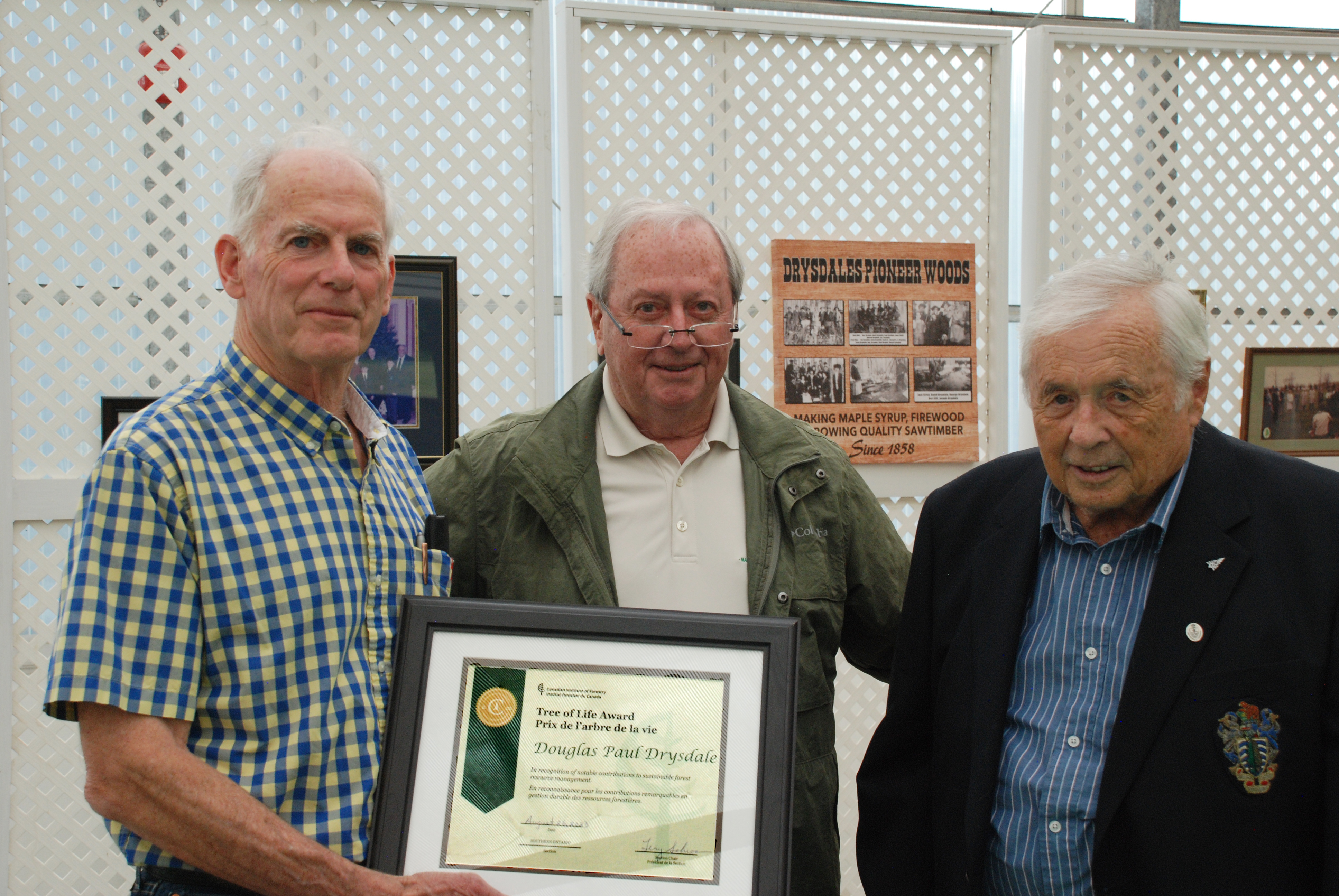
On October 3rd The Canadian Institute of Forestry – Northeastern Ontario Section in partnership with the Sault Ste Marie Conservation Authority hosted a celebration event to mark the 30th anniversary which included over fifty students from the Algoma District School Board and representatives of 14 local organizations.
Guy Smith, a council member with CIF, in Sault Ste Marie was recognized of for his 30 years of service to Algoma Envirothon. He received the National Conservation Foundation Envirothon Hall of Fame Award and the Maple Leaves Forever Ontario Envirothon Award from Forests Canada. In his remarks he commented on the hundreds of young people who have participated with energy and enthusiasm over the years and importantly increased their potential to shape the future of natural resource management and environmental science.
Recently Forest History Ontario members partnering with local CIF, have worked to revitalise the 1983 CIF Anniversary Plantation by installing interpretive signs that offer basic forest management information for students and the broader public to enjoy. These signs and some site maintenance activity to improve accessability, prepared the site for the very successful Envirothon program and celebration event.



